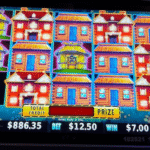In an age where digital vibrancy and sensory overload dominate visual culture, the quiet strength of monochrome art endures. Stripped of color, monochrome art compels the viewer to focus on form, texture, and the emotional weight of contrast black and white art paintings. Whether rendered in ink, charcoal, or grayscale digital media, monochrome works transcend trends, offering a purity and timelessness rarely found in the saturated palette of modern design.
The Essence of Monochrome
Monochrome, by definition, means “one color.” In the realm of visual art, it most often refers to black-and-white or grayscale creations. While this limited palette might appear restrictive, it paradoxically grants artists a unique kind of creative freedom. By removing color, artists draw attention to other compositional elements—light and shadow, depth and negative space, emotion and abstraction.
Historically, monochrome art has roots in ancient ink drawings from East Asia, classical etchings from the Renaissance, and the black-and-white photography that defined much of the 20th century. Each of these traditions showcases how limitation can breed innovation.
Why It Endures
The enduring appeal of monochrome art lies in its universality and emotional clarity. It doesn’t distract; it distills. The contrast between dark and light is one of the most fundamental visual experiences we have, hardwired into our perception. This elemental quality gives monochrome art an almost primal resonance.
In contemporary times, artists such as Ellsworth Kelly, Ad Reinhardt, and Hiroshi Sugimoto have embraced the monochrome not just as a technique, but as a philosophy. Their work often explores the boundaries of perception and the meditative power of simplicity.
Beyond Aesthetic—A Statement
Monochrome art also makes a philosophical or even political statement. It resists the chaos of modern media by embracing minimalism. It invites contemplation in a world of distraction. By engaging with fewer elements, the viewer is often compelled to look more closely, think more deeply, and feel more profoundly.
Digital Monochrome
In the digital age, monochrome art has found new relevance. Designers use it to communicate clarity and elegance in branding. Photographers turn to black-and-white to evoke nostalgia or highlight texture. Even in the world of AI-generated art, monochrome renders often stand out for their emotional depth and minimalist beauty.

